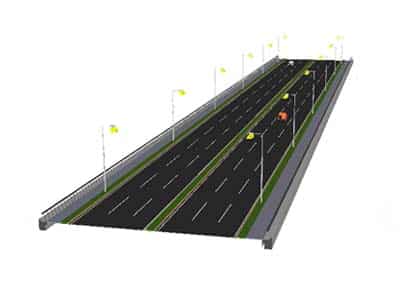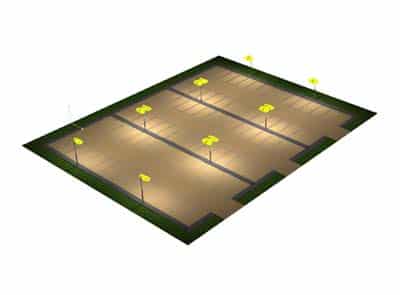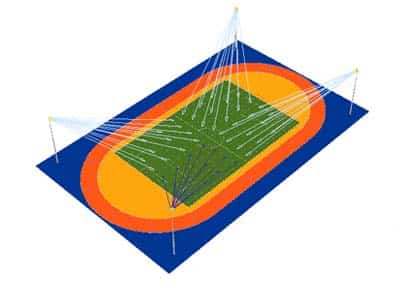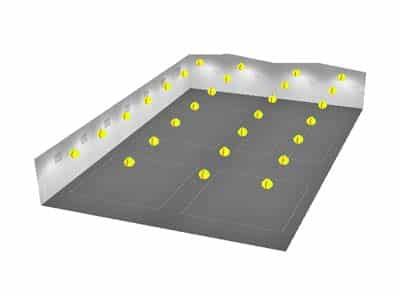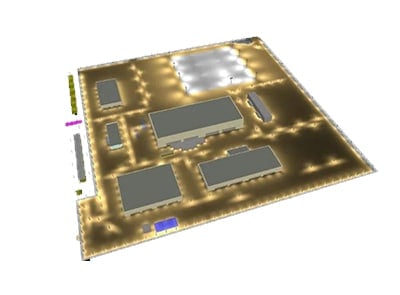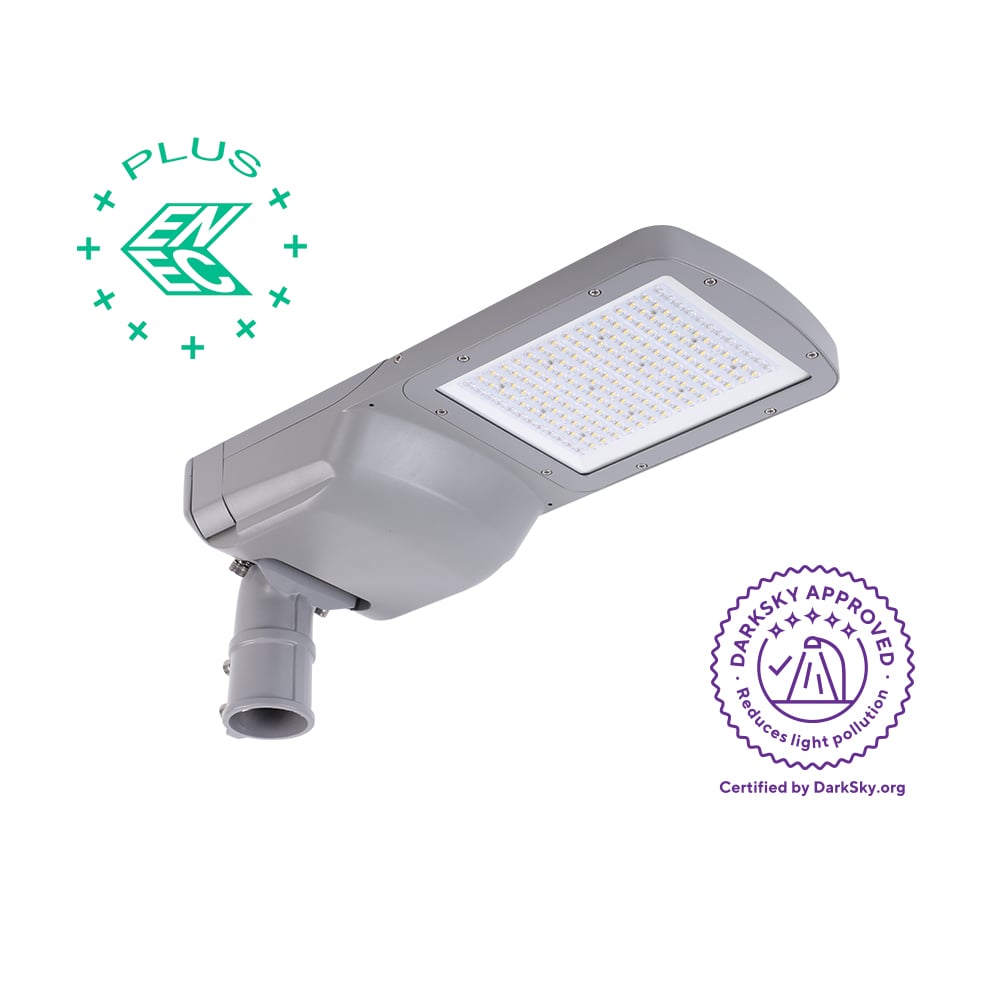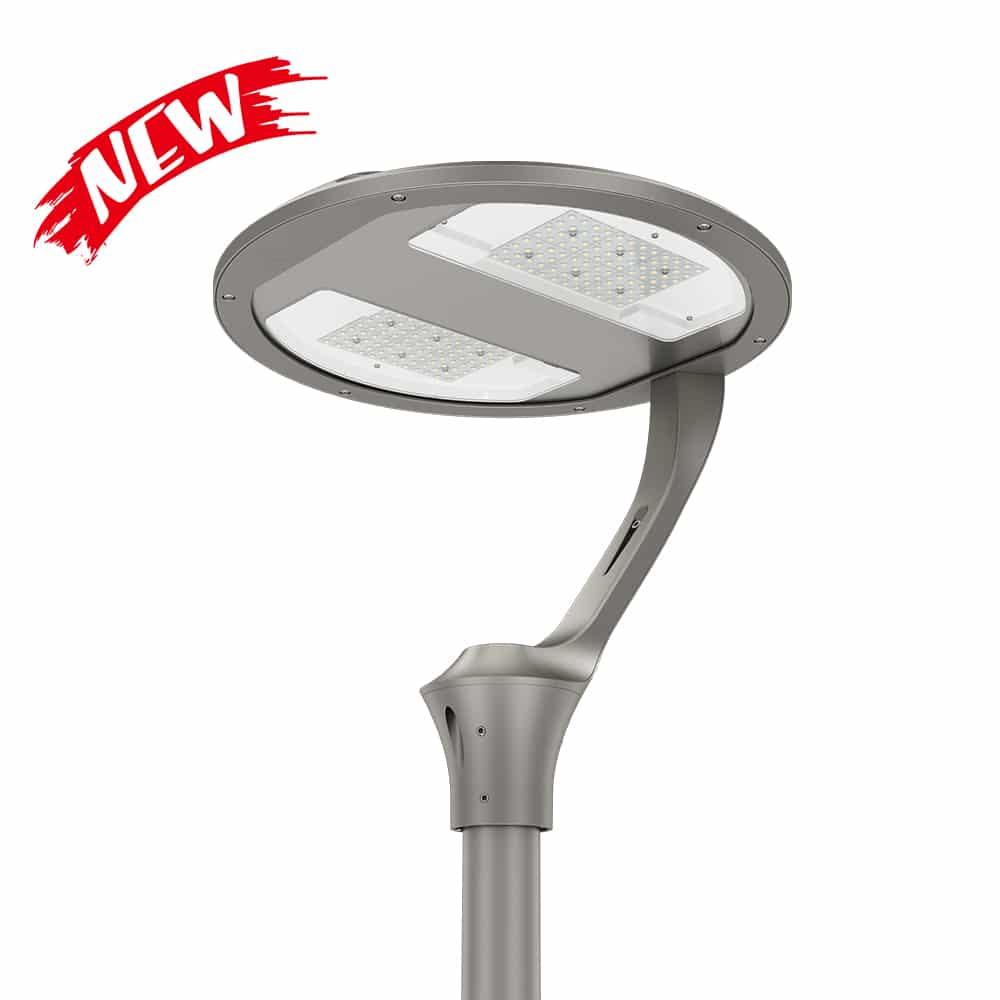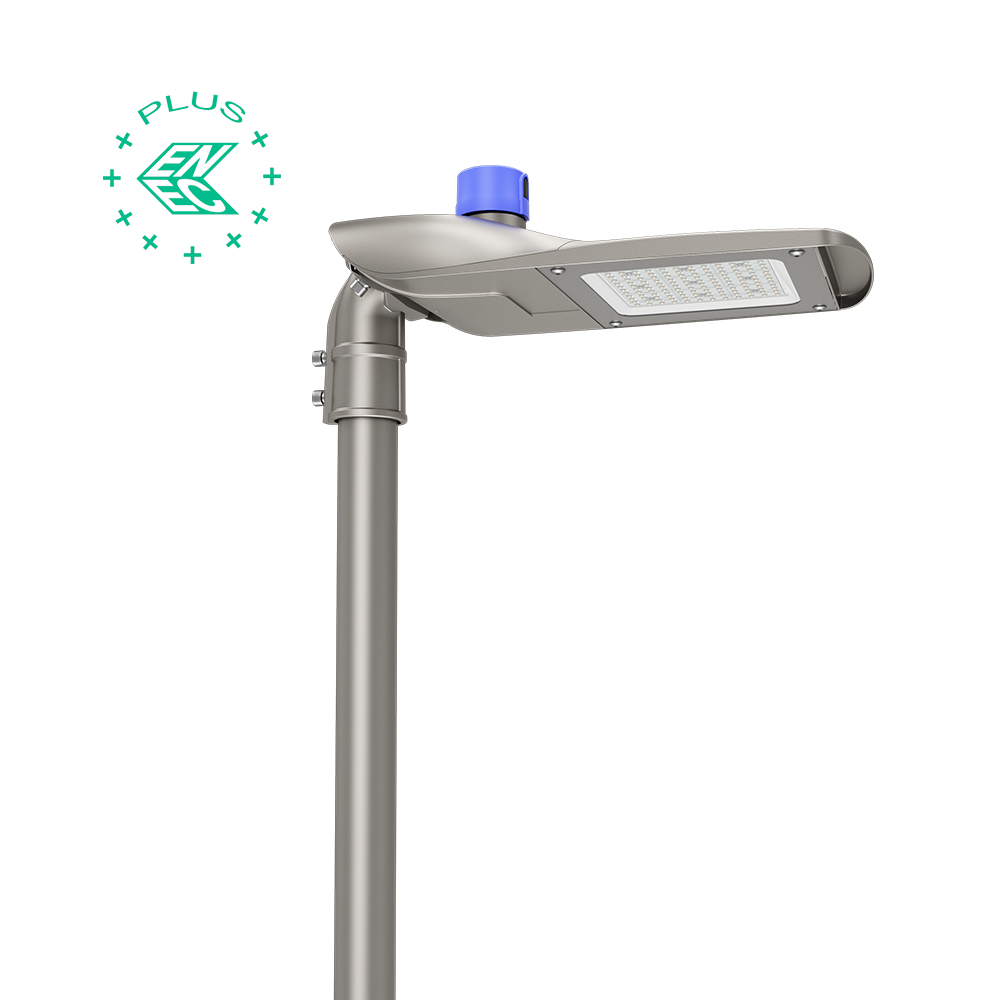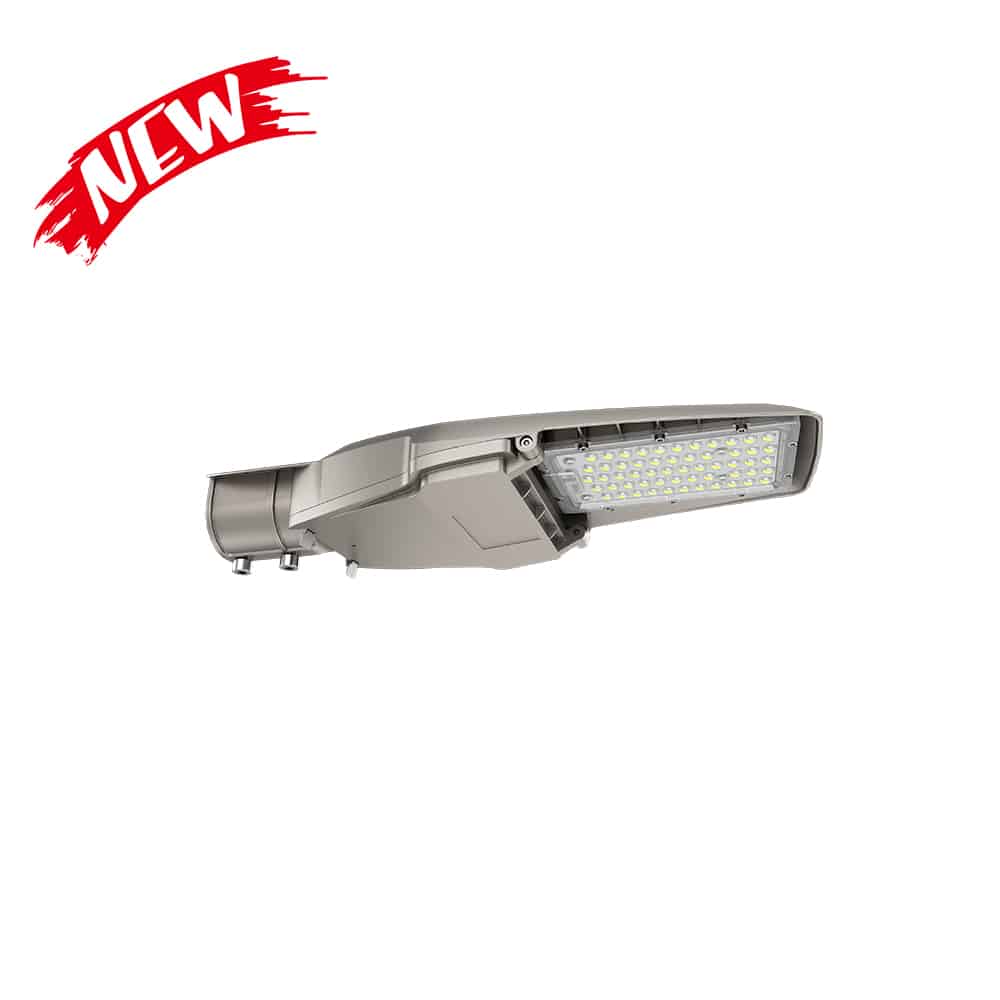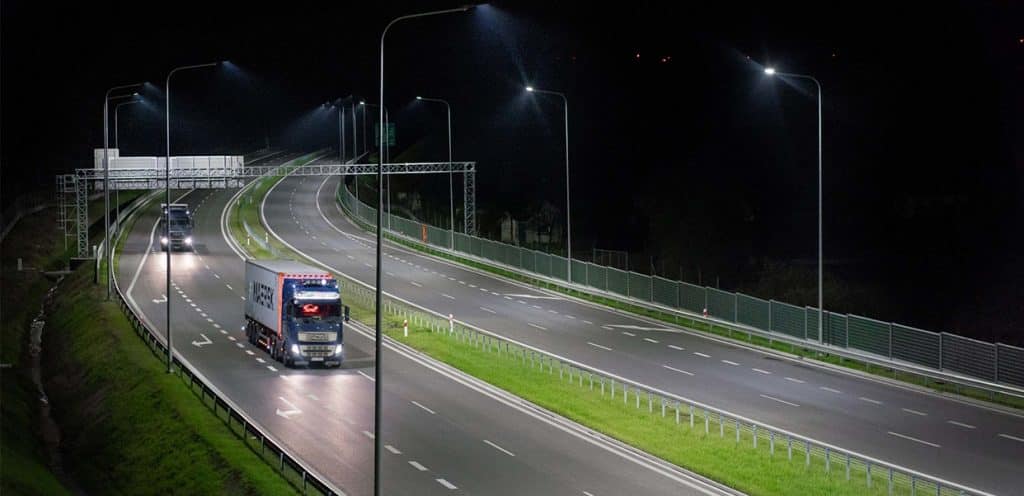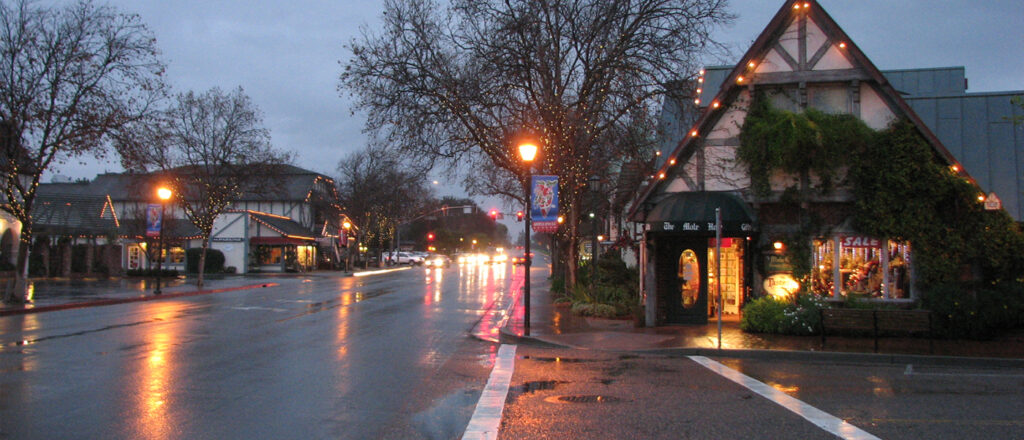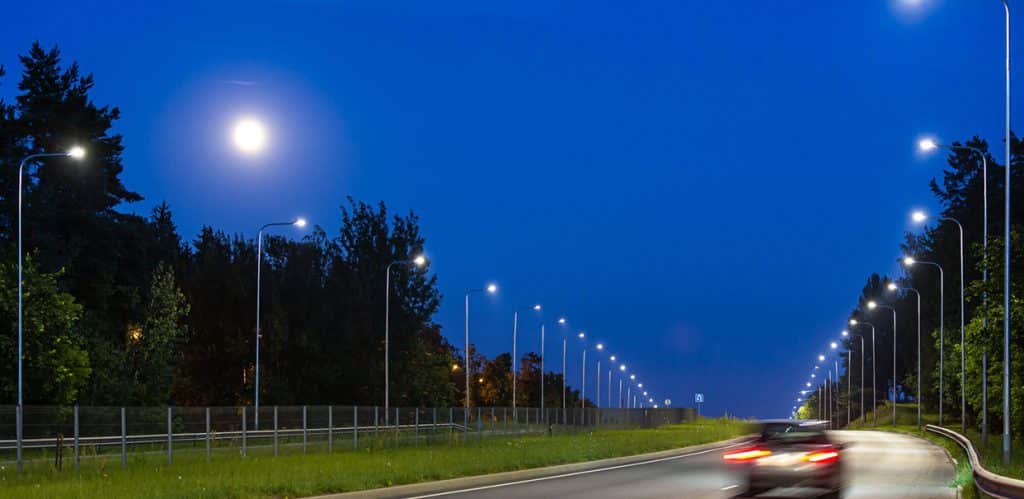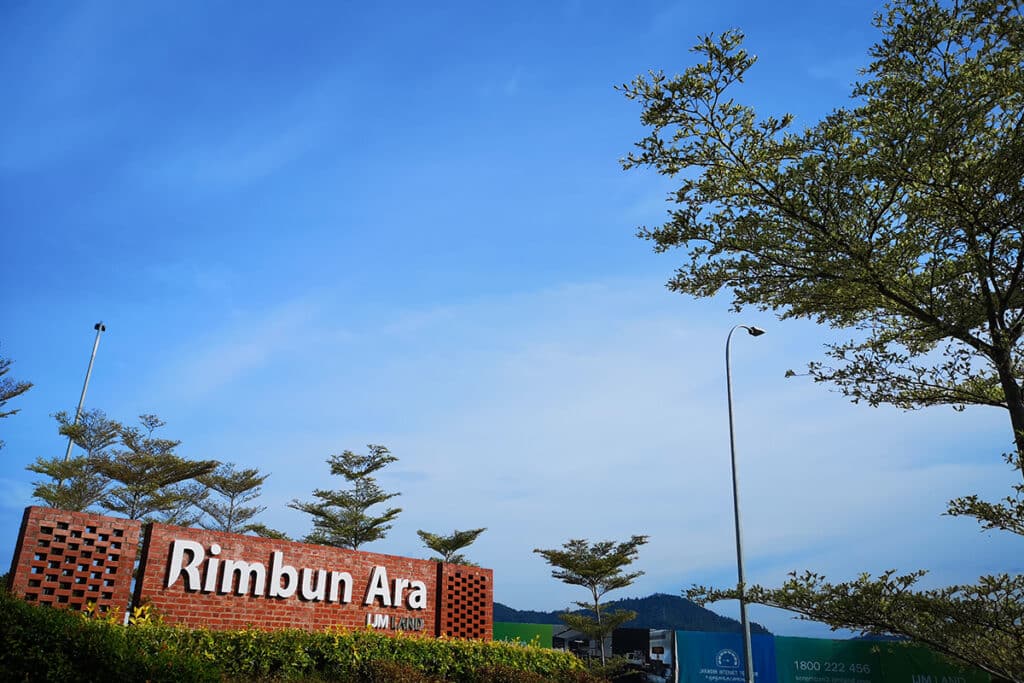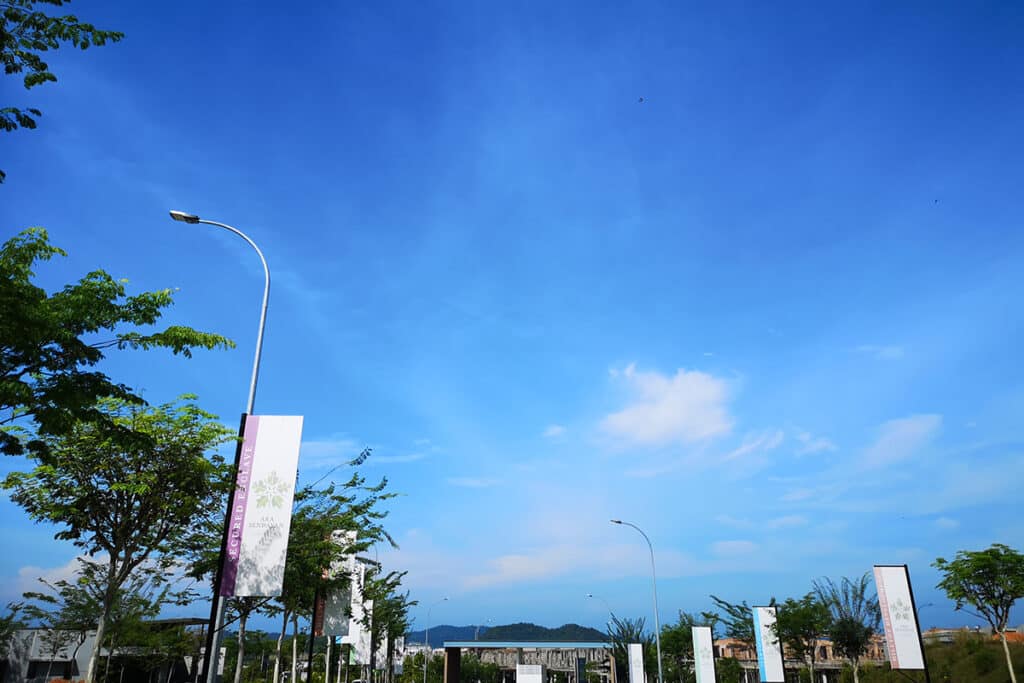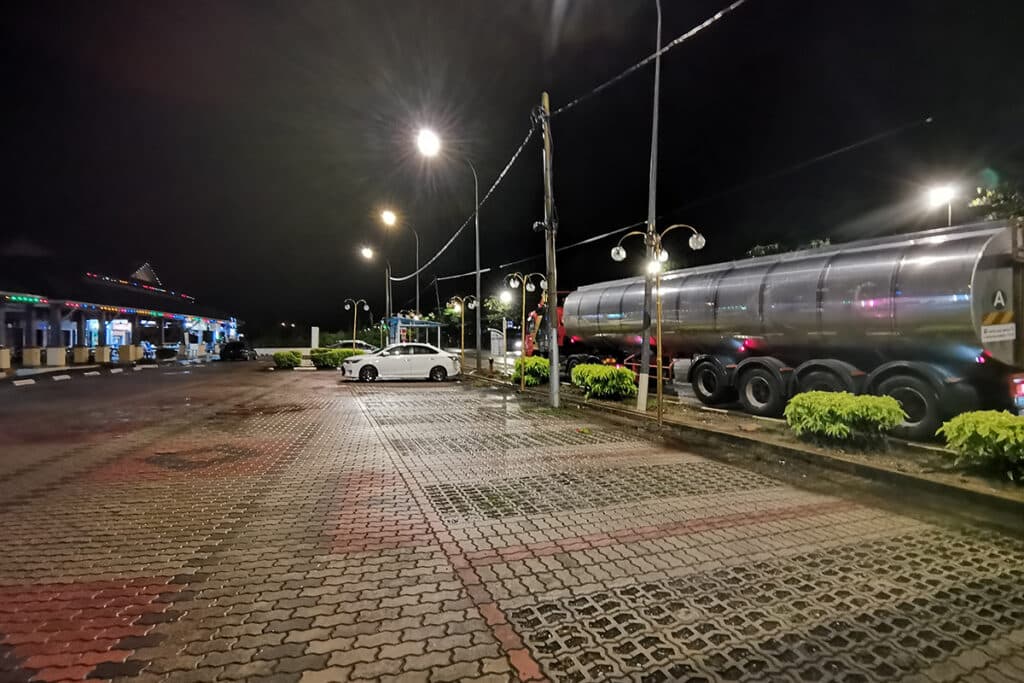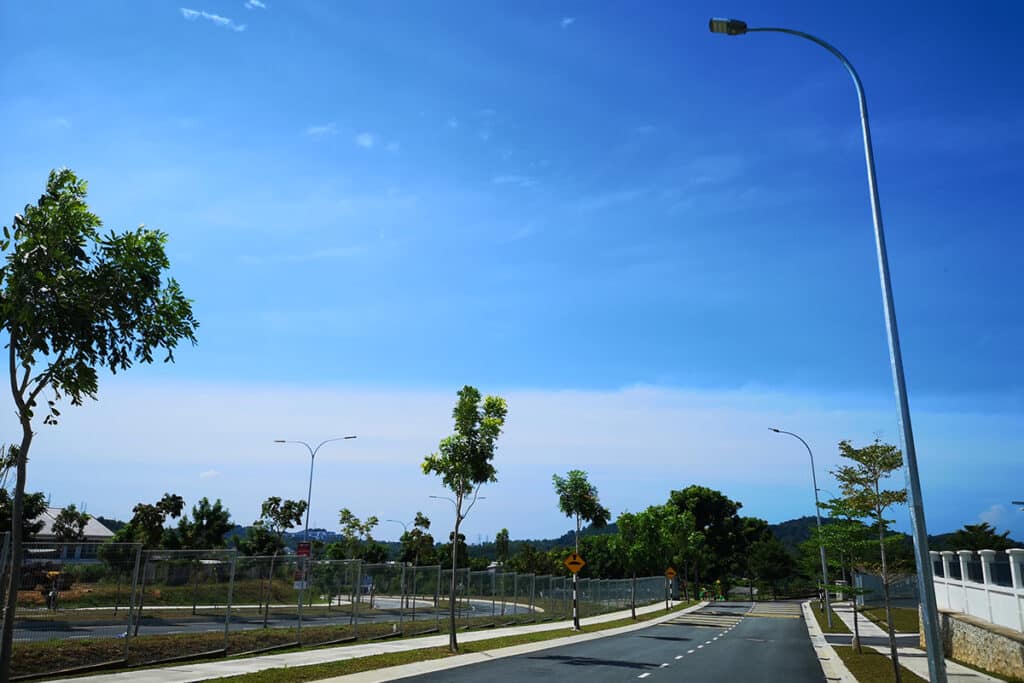Something about EN 13201 road lighting design standards
Something about EN 13201 road lighting design standards
Introduction
The main goal of street lighting is to ensure road safety during the night hours. A good street lighting system enables road users to identify people, obstacles and sources of danger nearby or directly on the road. This enables traffic participants to take appropriate action and helps to reduce serious accidents in the dark. So what are the standards for street lighting? How should we determine the lighting standards applicable to the road? And how can we confirm that the street lighting meets the corresponding standards after installation? These quality standards for street lighting are defined in the European standard EN 13201, which is subdivided into 5 standards. Its content covers PD CEN/TR 13201-1:2014 which is Guidelines on selection of lighting classes (How to choose the right lighting class?); EN 13201-2:2015 which is Performance requirements of street lighting; EN 13201-3:2015 which is Calculation of performance; EN 13201-4:2015 which is Methods of measuring lighting performance; EN 13201-5:2015 which is Energy performance indicators. Now let’s get into the text to understand these standards.
EN 13201 vs ANSI/IES RP-8
In addition to the European EN13201 road lighting standard, there is also a corresponding standard in America, namely ANSI/IES PR-8. ANSI/IES RP-8 is a standard jointly issued by the American National Standards Institute (ANSI, What’s ANSI?) and the Illuminating Engineering Society of North America (IES). Its full name is “Lighting Roadway and Parking Facilities”. This standard mainly involves road and parking facility lighting. The main content of road lighting involves roadway lighting level selection. The parameters that affect lighting level selection include speed, traffic volume, intersection/interchange density, ambient luminance, guidance, pedestrian/bicycle interaction, parked vehicles, facial recognition and conflict areas. In the design criteria and luminance selection chapter, it introduces the specific methods for selecting the appropriate lighting level based on these parameters. The recommended lighting design levels (based on the lighting class) for roadway, street, and residential/pedestrian facilities are different. It should go with H-Class for roadways, S-Class for streets and P-Class for residential/pedestrian areas respectively. EN 13201 is a European road lighting standard developed by CEN/TC169 Light and Lighting Technical Committee under the European Committee for Standardization (CEN). It also contains relevant contents such as lighting levels and selection criteria, and many contents are interoperable with ANSI/IES RP-8. If it is an American project, it is recommended to follow ANSI/IES RP-8, and this article mainly explains the relevant contents of EN 13201.
EN 13201-1 Road lighting – part 1: Guidelines on selection of lighting classes
EN 13201-1:2015 defines a parameter system for describing all typical lighting situations in road traffic. Based on this standard, lighting requirements can be determined according to the specific situation of the road. Various road parameters, such as the geometry of the traffic area, the type of traffic use and environmental impact, are used to determine the lighting category for the road, which includes M1 to M6, C0 to C5 and P1 to P6. However, it does not provide guidance for the selection of lighting categories HS, SC and EV, which have their own national standards in each country. The selection criteria for each subcategory are different, but the main ones include road design speed or speed limit, driving speed (for lighting class P category), traffic flow, traffic composition, lane separation, intersection density, parked vehicles, ambient brightness, face recognition (for lighting class P category), and navigation tasks. Some parameters (such as traffic flow and ambient brightness) may vary at different times of the night, so the lighting category may be adjusted to different categories at certain times. Due to its relatively complex content, ZGSM recommends consulting to obtain the project’s requirements for the lighting category of the road. If they are not clear about the requirements, Dialux lighting simulation software also has a wizard which helps you to define the lighting class step by step. In the wizard, it will ask you to answer every question. Take M lighting class for motor as example, it includes typical speed of main user, whether there is other user, main weather type, type and frequency of the interchanges, traffic flow of motorised vehicles, does a conflict zone exist, complexity of field of vision, degree of navigational difficulty, brightness of surroundings. If all go with fault selection, we will go with M4(ME4a) lighting class finally, then we can start the lighting design(Dialux for street lighting design).
EN 13201-2 Road lighting – part 2: Performance requirements of street lighting
EN 13201-2 is the second part of the road lighting standard, which specifies the performance requirements for different lighting classes. These different lighting classes include M lighting class for motor vehicle lanes, C lighting class for conflict areas (mixed roads), and P lighting class for pedestrian areas. These lighting classes are determined based on the needs and requirements of specific road users and road types, which are introduced in EN 13201-1. In different lighting classes, they have requirements for various lighting indicators, including average luminance, average illuminance, total uniformity, longitudinal uniformity, glare (Ti), semi-cylindrical illuminance and ambient ratio, etc. Among them, average luminance is the requirement for M lighting class, and average illuminance is the requirement for P and C lighting class. Overall uniformity is for M and P lighting class, while longitudinal uniformity is only for M lighting class. If you are interested in more, you can refer to ZGSM’s special blog – Lighting uniformity and how to improve it. All three lighting classes have requirements for Ti (more about Ti in street lighting). Semi-cylindrical illuminance (ESC) is an additional requirement for pedestrian areas where facial recognition and feelings of safety are especially important. Edge illuminance ratio(or surround ratio) is an indicator of visibility of the surrounding environment and is required in the M lighting class. Read SR vs Rei to find more details.
EN 13201-3 Road lighting – part 3: Calculation of performance
EN 13201-3 describes the mathematical methods and procedures which should be used to calculate the lighting performance characteristics defined in EN 13201-2. The basic conventions made in the mathematical procedures described in this standard includes:1) the luminaire is regarded as a point source of light; 2) light reflected from the surrounds and interreflected light is disregarded; 3) obstruction to the light from luminaires by trees and other objects is disregarded; 4) the atmospheric absorption is zero; 5) the road surface is flat and level and has uniform reflecting properties over the area considered. We also need the light distribution of the luminaires used in the lighting installation which is for calculating the lighting quality characteristics in this standard. These data are in the form of an intensity table (i-table) which gives the distribution of luminous intensity emitted by the luminaire in all relevant directions. When luminance calculations are to be made, photometric data for the light reflecting properties of the road surface are required in the form of an r-table (What’s R table?).
In the calculation process, if you want to determine the light intensity from the luminaire to a certain point, you must find the vertical photometric angle (θ) and photometric azimuth (C) from the light path to that point. To do this, you must consider the tilt angle of the luminaire in the application and the tilt angle during measurement, the orientation of the luminaire, and the rotation of the luminaire. Of course, the installation spacing of the luminaires, luminaire arrangement(More about luminaire arrangement), pole height, overhang (setback and boom length), tilt, etc. also have an impact on the lighting result. The standard stipulates that the observer is located 60 m ahead of the first luminaire and it’s at a height of 1.5 m above road level. And length of calculation field is equal to luminaire spacing S. At the same time, it stipulates the number N of calculation points along calculation field. When S≤30m, take N=10; when S>30m, N=[S/3m]+1. Similarly, the number N of calculation points across calculation field has a similar calculation method. There is a lot of other information in the EN 13201-3 standard. If you feel it, you can refer to the corresponding standard or contact ZGSM for more information.

EN 13201-4 Road lighting – part 4: Methods of measuring lighting performance
The EN 13201-4 standard mainly describes the measurement method of road lighting performance, and the standard specifies the specific measurement contents. These test contents include horizontal illuminance (Eh) and vertical illuminance (Ev), which require a photometer probe to measure plane illuminance, while hemispherical illuminance (Ehs) and semi-cylindrical illuminance (Esc) require special photometer probes for measurement; road surface luminance, which requires a luminance meter with appropriate performance, and can also be measured using a dynamic measurement system including imaging equipment; in addition, it also includes geometric data (pole height, extension length, direction, inclination and rotation angle in lamp application), power supply voltage (preferably using a recording voltmeter), ambient temperature and humidity (generally measured at a height of 1.0 meters above the ground, preferably measured/recorded every 30 minutes). In addition, EN13201-4 also clarifies four basic situations where measurements are required: First, in the final test stage, it is necessary to verify whether the lamps meet the standard requirements or design specifications through measurement; second, measurements are taken at predetermined intervals during the service life of the street lamps to quantify the degree of attenuation of lighting performance and determine maintenance needs; third, when roads use adaptive street lighting (such as controlling brightness or illumination based on traffic volume, time, weather or other environmental factors), continuous or predetermined interval measurements are required to adjust the luminous flux (Watts vs luminous flux) of the lamps.
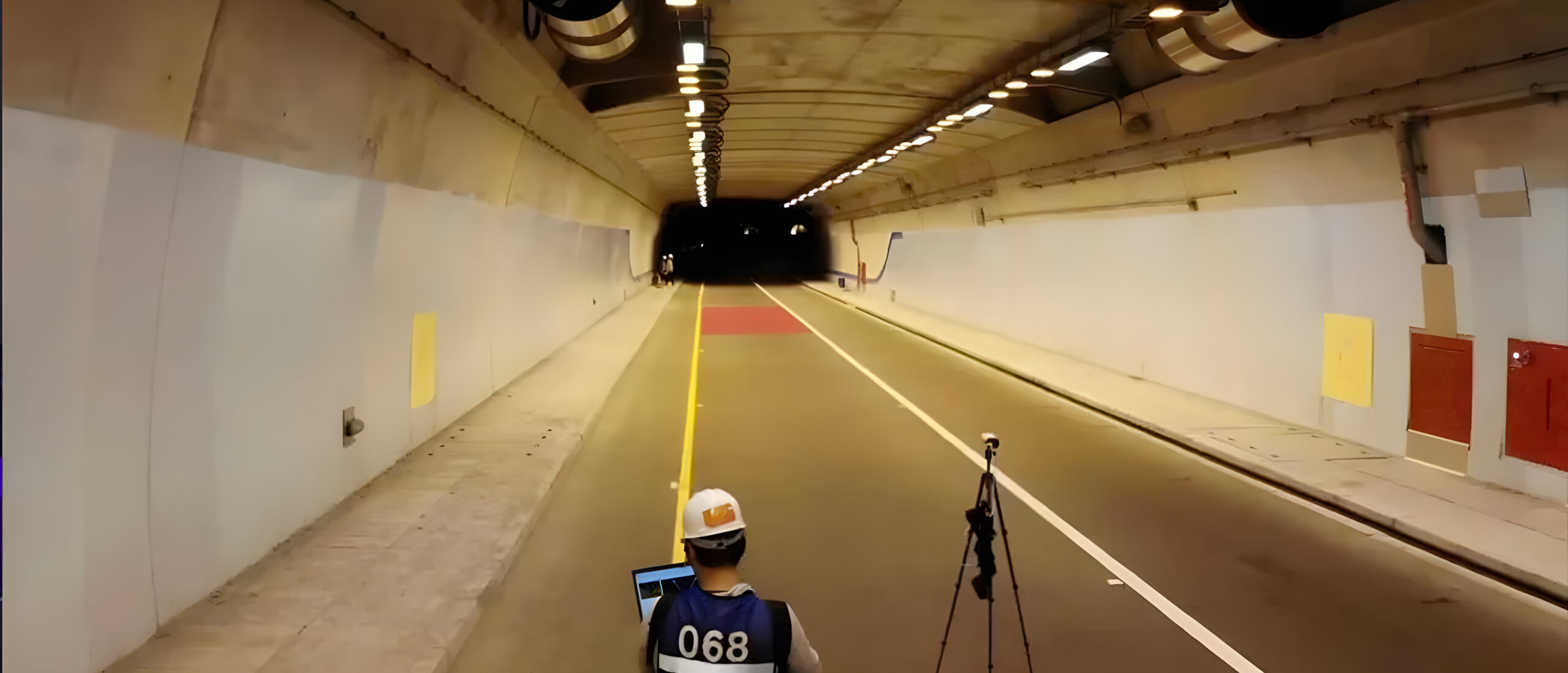
EN 13201-5 Road lighting – part 5: Energy performance indicators
EN 13201-5 describes two energy performance indicators: the Power Density Index (PDI and what’s PDI?) DP in W/(lx*m²) and the Annual Energy Consumption Index (AECI) DE in (Wh)/m². These two indicators should always be used together when assessing the energy performance of a particular lighting system. The power density index defines how to calculate the energy performance of a particular street lighting installation and enables comparisons between different setups and different technologies in the same street lighting project. In general, PDI values can only be used to compare different setups at the same installation site, but not at different sites and under different environmental conditions. To calculate the power density index for any given area, we need to know the total system power P of the lighting system, including the operating power of all individual lighting points (luminaires and any associated equipment), as well as the power of equipment that is not part of the individual lighting points but is necessary for their operation (such as central control systems and switches), the average maintained illuminance E- in [lux] for each zone, and the size of each zone. The formula for Dp is: Dp=Total power (W) / Area (m²) / (Illuminance (lux). When 60W street light is installed on pedestrian road(S=30 meters, W=4 meters), we can get the illuminance 14.48lux, then we can get the Dp=60/120/14.48=0.035W/lx/m2. As lighting categories vary with seasons and night time, the PDI (Average Daily Energy Consumption of Lighting Equipment) needs to be calculated for each lighting category. In order to be able to compare the energy consumption of two different setups during a full year, it is necessary to calculate the AECI (Annual Energy Consumption Index), or De. The formula for De is: =Total power (W) / Area (m²) * Operating hours per day * Days per year. In the Dialux EVO, the default operating hours is 4000 hours per year, but we can set it as the one of actual operating hours. Take 12 hrs per day as example, the operating hours should be 4380hrs for one year. In this case De=60W/120m2 * 12hrs * 365 = 2.2Kwh/m2/year. The following is the result of the lighting simulation, showing Dp and De, which is consistent with the result we calculated using the above formula. PS: When the street light uses the timer dimming function (What’s timer dimming in street light?), the energy consumption of each time period at night needs to be calculated separately.

The guiding significance of EN 13201
EN 13201-1 helps us choose the lighting level that suits our project, EN 13201-2 clarifies the requirements that each lighting level needs to meet, EN 13201-3 introduces lighting calculations in detail, EN 13201-4 is about lighting performance measurement to verify whether the lighting effect meets the corresponding requirements, and EN 13201-5 introduces Dp and De, which are used to compare the lighting results of different solutions. This series of standards forms a closed loop from demand analysis, design calculation, construction verification to solution optimization, which can not only ensure the safety of road lighting, but also promote the application of energy-saving technologies. For example, EN 13201-5’s requirements for energy efficiency promote the widespread application of LED lamps and smart control solution (What’s smart lighting control?). EN 13201-4 standardizes the lighting result verification and acceptance process after the installation of street lights, ensuring that road lighting meets the requirements of pedestrian and driver contrast, luminance and uniformity. The following is ZGSM’s road lighting simulation and other lighting simulation solutions. If you are interested, you can click on the picture to learn more about it.
Summary
This article mainly explains the relevant content of the EN13201 standard. As practitioners in the lighting industry, we can no longer think that it only has relevant information such as M, C and P lighting classes based on EN13201-2. Through learning, we know that the selection of lighting levels is explained in detail in EN13201-1. EN13201-3 explains the mathematical model and calculation method in lighting design. Its content is relatively complex. Those who are interested can learn a little bit, because it is also very helpful for optimizing lighting design. EN13201-4 standardizes the acceptance process after the completion of construction, including measurement methods, measurement tools, and measurement time points, etc. Through actual measurement and comparison with the luminance, uniformity and glare in the EN13201-2 standard, it is determined whether the lighting effect meets the standard. EN13201-5 defines how to calculate the energy performance indicators of road lighting installations using the power density indicator (PDI) DP and the annual energy consumption indicator (AECI) DE, which indicates how efficiently a street lighting solution is. For more information about EN13201 road lighting standard, please contact ZGSM.
Related Products
Related Blogs
Related Cases
People also ask
Author introduction

Hello Customers,
My name is Taylor Gong, I’m the product manager of ZGSM Tech. I have been in the LED lights industry for more than 13 years. Good at lighting design, street light system configuration, and bidding technology support. Feel free to contact us. I’m happy to provide you with the best service and products.
Email: [email protected] | WhatsApp: +8615068758483

